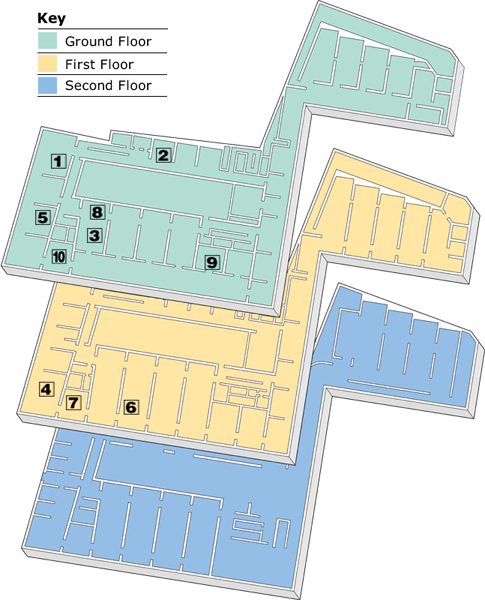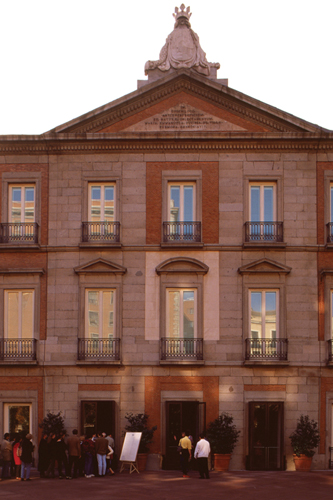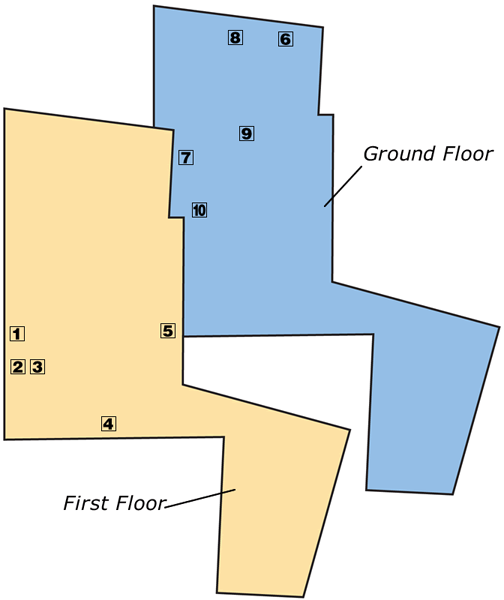One of the most important art collections in the
world, the Thyssen Bornemisza focuses on European painting from the 13th
to the 20th centuries and is the perfect complement to the Prado and Reina Sofía.
Wealthy industrialist Baron Heinrich Thyssen Bornemisza began acquiring
Old Masters in the 1920s for his villa in Switzerland. After the
baron’s death in 1947 his son, Hans Heinrich, added modern masterpieces,
including French Impressionists, German Expressionists and the pick of
the Russian Avant Garde (see Modern Paintings in the Thyssen),
to the collection. In 1993 the state bought the collection for the
knock-down price of $350 million (the true value being estimated at
nearer $1 billion). In spring 2004 a new extension opened, displaying
Baroness Carmen Thyssen Bornemisza’s collection, which includes
important Impressionist works.
Paseo del Prado 8 91 369 0151; for advance tickets call 90 248 8488
www.museothyssen.org
Open 10am–7pm Tue–Sun (Jul–Aug: to midnight Tue–Sat); closed 1 Jan, 1 May, 25 Dec Adm €6 (or €9 for both the permanent & temporary collections) Dis. access
|
|
The main entrance is
through the courtyard where there is a shop and cloakrooms. The
collection is organized chronologically, starting with the galleries on
the top floor. Visitors following the official route will trace the
history of western art, starting with the Italian Primitives and ending
with 20th- century abstract and Pop Art. The Carmen Thyssen Collection
occupies the first and second floors of the new extension. Temporary
exhibitions are held on the ground floor and there is a viewing terrace
on the fifth floor.
|


Façade
|
The café-restaurant has magnificent views of the garden.
|
|
|
The Thyssen opens for evening showings in summer, when you can dine at the garden restaurant.
|
|
Top 10 PaintingsChrist and Woman of Samaria at the Well Outstanding
among the collection of Italian Primitives is this work (1310–11) by
Sienese master Duccio di Buoninsegna (c.1278–1319). The painting’s
lifelike quality reveals Duccio’s interest in accuracy and looks forward
to the Renaissance. Self Portrait This
selfportrait (c.1643) by Rembrandt (1606–69) is one of more than 60
such works by the great Dutch artist. It reveals Rembrandt’s view of
himself as isolated genius. Young Knight in a Landscape Vittore
Carpaccio (c.1460– 1525) is an important representative of the Venetian
school. This intriguing work (1510) shows a courtly knight amid
symbolic and animals and plants. View of Alkmaar from the Sea Dutch
artist Salomon van Ruysdael’s (1600–70) evocative seascape (c.1650) is
one of the finest examples of the genre, for its effortless mastery of
colour and perspective. The Virgin of the Dry Tree This
devotional painting (c.1450) by Dutch artist Petrus Christus
(c.1410–72), was inspired by an Old Testament metaphor in which God
brings the dry tree (the chosen people) to life. The “A”s hanging from
the tree stand for Ave Maria and were meditational. Expulsion, Moon and Firelight This
haunting work (c.1828) is by the influential American artist, Thomas
Cole, founder of the Hudson River School. Cole idealized the untramelled
American landscape as a new Garden of Eden. Still Life with Cat and Rayfish This
witty still life (c.1728) in the Dutch style is by French artist, Jean
Baptiste Siméon Chardin (1699–1779). Its companion piece, Still Life with Cat and Fish, is in Room 27. Portrait of a Young Man The
subject of this painting (c.1515) by Raphael (1484–1520), one of the
great artists of the High Renaissance, is thought to be Alessandro de
Medici, nephew of Pope Clement VII. This haughty youth later became a
tyrant and was murdered by his cousin in 1537. The Annunciation Distorted
figures, swirling lines and bold colours are typical of the Mannerist
style which El Greco (1541– 1614) mastered in Venice, where he was
influenced by Titian and Tintoretto, both masters of the High
Renaissance. This intensely spiritual painting (c.1567–1577) reveals the
Cretan artist’s development following his move to Toledo, Spain, in
1577. Portrait of Giovanna Tornabuoni This
sublime portrait (1488) by Florentine painter Domenico Ghirlandaio
(1449–94), was the last Baron Thyssen’s favourite. It was commissioned
to celebrate the marriage of Giovanna degli Albizzi to Lorenzo
Tornabuoni – a union of two powerful families. Tragically, Giovanna died
in child birth shortly afterwards.
Modern Paintings in the Thyssen

Modern Paintings Floorplan
Woman with a Parasol in a Garden This
Impressionist painting of a garden bathed in sunlight (c.1873) is by
one of the founders of the influential movement, Pierre Auguste Renoir
(1841–1920). Renoir was apprenticed for four years as a porcelain
painter, and later attributed his technical brilliance in handling
surface and texture to his early training. Swaying Dancer This
exquisite study of a dancer in performance (1877–9) by French artist
Edgar Degas (1834–1917) is one of a series of his works devoted to the
ballet. Unlike some Impressionist painters, Degas placed great emphasis
on the importance of drawing, as the superb draughts manship of this
pastel clearly shows. Les Vessenots Vincent
Van Gogh (1853–90) painted this dazzling landscape (1890) during the
last year of his troubled life. He worked feverishly while staying at
Les Vessenots, near Auvers in France, producing more than 80 canvases in
less than three months. Fränzi in Front of a Carved Chair Ernst Ludwig Kirchner (1880– 1938) was an important figure in German Expressionism and a member of the group known as Die Brücke
(The Bridge), which began the movement in Dresden. These artists were
more interested in expressing feelings through their work, and
encouraging emotional responses from their audience, rather than
portraying outward reality. Fränzi, seen in this lovely 1910 work, was
one of their favourite models. The Dream A founder member, with Wassily Kandinsky, of the influential Blaue Reiter
(Blue Rider) group, German artist Franz Marc (1880–1916) took
Expressionism in a new, spiritual direction. Colours, as in this 1912
work, are used symbolically, as are the animals in his paintings, which
represent truth, beauty and other ideals. Still Life with Instruments Liubov
Popova (1889–1924) was one of the most innovative artists working in
Russia on the eve of the Revolution. This Cubist painting (1915),
completed after a period of study in Paris, paves the way for her Painterly Architectonic, an even bolder abstract work exhibited in Room 41. Hotel Room In
this moving 1931 painting by American artist Edward Hopper (1882–1967)
the bare furnishings, discarded suitcase and disconsolate posture of the
woman holding the railway timetable masterfully suggest loneliness and
dislocation – a subject the artist returned to time and again. Hopper is
the most important representative of the American social realist
school, created in the wake of the Wall Street Crash of 1929 and the
Great Depression which followed. New York City, New York Piet
Mondrian (1872–1944) was one of the most influential abstract artists
of the 20th century. Born in The Netherlands, he moved to New York after
the outbreak of World War II. The simple geometrical forms and bold
colours of this abstract painting (1940–42) celebrate the energy and
dynamism of his adopted home. Brown and Silver I Famous
for his “action paintings” – randomly throwing or pouring paint onto
the canvas in an effort to create spontaneity – Jackson Pollock
(1912–56) made a huge impact on postwar art in America. This painting
(c.1951) is typical of his revolutionary approach. Portrait of Baron H.H. Thyssen Bornemisza This
revealing study of the museum’s benefactor (1981–2) is the work of
Britain’s most distinguished portrait artist, Lucian Freud (b.1922). In
the background is Pierrot Content by Jean Antoine Watteau (1684–1721), which visitors will find in Room 28.
|